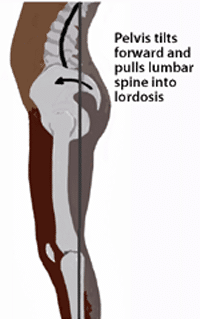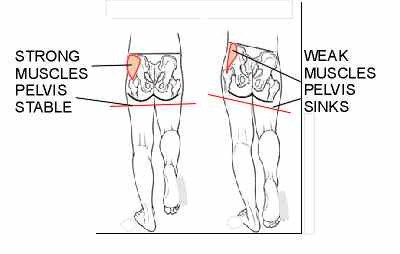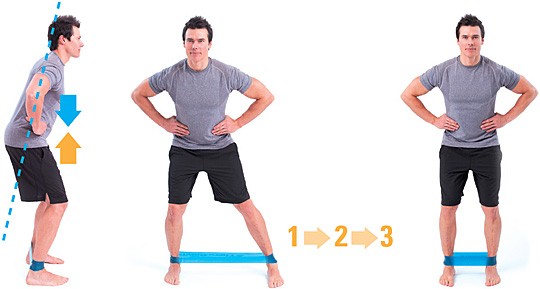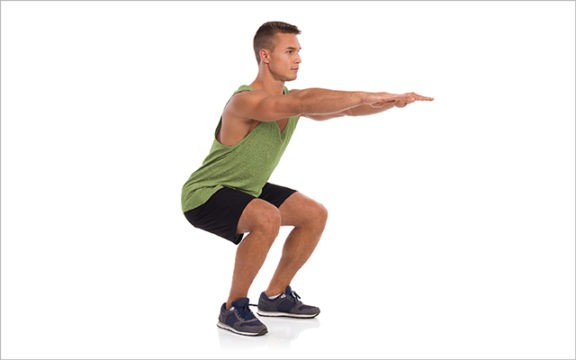The IMPORTANCE of Strong Glutes
Posted on August 28th, 2018 by Andries Lodder
 By Jennifer Steele
By Jennifer Steele
The role of our Gluteal Muscles
Did you know that the muscles of your derriere are so much more important then just making your favourite pair of jeans look good? Our bottoms or glutes are made up of three major muscles. The Gluteus Maximum, Gluteus Mininus and Gluteus Medius. These muscles are primarily responsible for extending the hips, abducting the legs and internally and externally rotating the hips. They are also extremely important in stabilizing the hips. The majority of people are concerned with the external appearance of this area of the body, but rather its the ability of these muscles to perform their actions and jobs that is important. These days the vast majority of people’s jobs require them to sit all day, this position allows the glutes to actually switch off and so they stop firing efficiently. When this happens our hip flexor muscles tighten and so the position of the pelvis is pulled forward. This then leads to other kinds of problems such as; lower back pain, hip pain, knee pain and decreased athletic performance.So, what are the benefits of strong glutes:
Injury prevention:
- Developing strong glutes is essential in preventing injury to the trunk and lower limb. Weak glutes can lead to an imbalance at the pelvis or hips which can cause excessive medial rotation of the femur and lateral tracking of the patellar. Meaning that the knee falls in when bent and that the patella tracks skew causing the bones to rub together. As you can see below an imbalance in the hips can lead to numerous problems of the lower limb and trunk.

- Weak glutes can also lead to lower back pain. When your glutes are strong, you have a stable pelvis and better support for your lower back. This means that a load can be more evenly distributed through the lower back and lower extremities. However, when the glutes are weak one side of the back takes greater strain then the other and so this can lead to pain. Weak glutes can also cause a Lordosis or excessive arch of the lower back which can also lead to pain.

Improved athletic performance:
- Having strong glutes is essential in almost all sports not only because they can help prevent injury but because they can improve athletic performance. The glutes are responsible for acceleration, deceleration, explosive power and the change of direction. Therefore when athletes improve their gluteal strength they can increase their speed and power.
Fall prevention in the elderly:
- Weak glutes also increase our risk of falling as we get older. The glutes and abdominals stabilise the pelvis and trunk and so help us maintain our balance. It is therefore important to ensure strong glutes as we age to prevent our risk of falling.
How to identify weak glutes
The Trendelenburg test:
This test is used to primarily test the strength of the glut Medius and minimums.
 The test is performed by asking the individual to stand on one leg and lift the other leg off the ground. If the pelvis of the elevated leg cannot stay level with the other side this is an indication that stance leg has a weak glute.
The test is performed by asking the individual to stand on one leg and lift the other leg off the ground. If the pelvis of the elevated leg cannot stay level with the other side this is an indication that stance leg has a weak glute.
Here are some exercises you can do to strengthen your glutes:
Side Ways walking:

- Place Loop band/Thera Band around the ankles
- Stand with feet hip width apart, toes straight, knees bent, bum out backwards
- Now take a step with the right leg out to the side, keeping the knees out in line with the toes
- Then bring the left leg inwards so that the feet are back in the starting position, again focusing on keeping both knees out in line with the toes (perform this movement slow and controlled)
- Repeat steps 3 and 4 until you have completed 10-20 steps and then repeat on the left leg.
- Perform 4 sets of 10-20 repetitions on each leg
Squats:
- Stand with feet just wider then hip width apart, with toes pointing outwards
- Hands and arm out in front of you
- Keep head straight, do not look to the side or down
- In this position, squat as far down as possible without lifting the heels or falling backwards
- Return to starting position
- Perform 3 sets of 10 repetitions
Tweet
